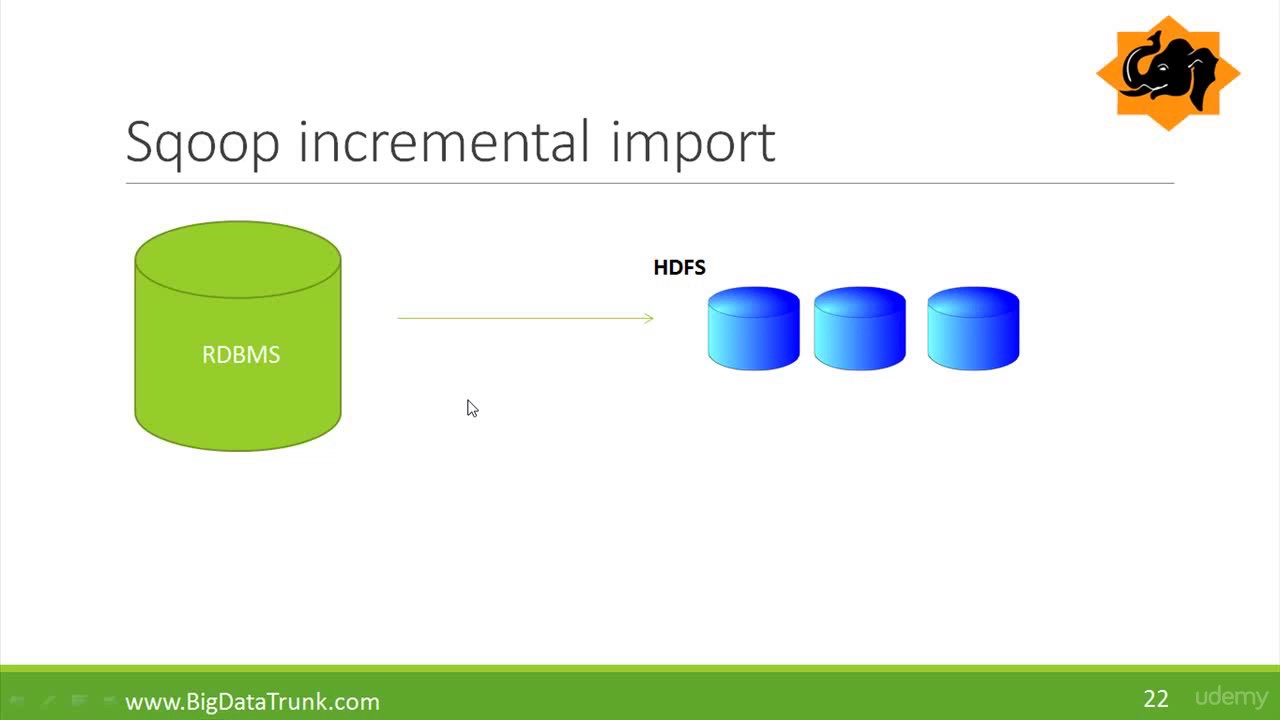How Does Incremental Load Work In Sqoop: A Step-By-Step Guide
26 Complete Sqoop Training – Running Incremental Load In Sqoop
Keywords searched by users: How does incremental load work in sqoop sqoop incremental append and lastmodified, sqoop job incremental import example, how can you import only a subset of rows from a table, sqoop job example, sqoop interview questions, sqoop import command
What Is Incremental Load In Sqoop?
Incremental loading in Sqoop refers to the technique used to efficiently synchronize updated or modified data, often referred to as “delta data,” from a Relational Database Management System (RDBMS) to the Hadoop ecosystem. The goal is to keep the Hadoop data store up-to-date with changes in the RDBMS without transferring all the data each time. This is achieved through the utilization of Sqoop’s incremental load command, which enables the extraction and transfer of only the newly changed or added records from the source database to Hadoop. This approach reduces data transfer times and minimizes network and storage overhead. As of December 17, 2018, Sqoop offered this capability to enhance the data synchronization process between RDBMS and Hadoop.
What Is Full Load And Incremental Load In Sqoop?
In Apache Sqoop, two essential data loading strategies are commonly employed: Full Load and Incremental Load.
Full Load involves loading an entire table or all tables from a database in a single command. This method is particularly useful when you want to replicate the entire dataset from a source to a target system.
On the other hand, Incremental Load is a feature within Apache Sqoop that enables the selective loading of updated portions of a table. This approach proves valuable when you only need to transfer the changes made to the data since a certain point in time, which helps save processing time and bandwidth.
For instance, let’s say you have a database, and you’ve been regularly updating records within it. With Incremental Load in Sqoop, you can efficiently transfer only the modified or newly added data, minimizing the data transfer workload and optimizing the data synchronization process.
These two data loading methods, Full Load and Incremental Load, are essential tools in the Sqoop toolkit, offering flexibility in managing data transfer operations based on your specific requirements. Please note that the information mentioned above is current as of September 2021, and there may have been updates or changes to Sqoop’s functionality since then.
What Are The Types Of Incremental Load In Sqoop?
Sqoop offers two distinct types of incremental data loading methods: “append” and “lastmodified.” When utilizing Sqoop for incremental imports, you can employ the “–incremental” parameter to specify which method to use based on your data source’s characteristics.
The “append” mode should be chosen when importing a table that constantly receives new rows with incrementing row IDs. This mode efficiently identifies and imports the newly added rows, ensuring your dataset remains up-to-date.
On the other hand, the “lastmodified” mode is ideal for situations where the source data records are modified, and you want to synchronize the changes. By using this mode, Sqoop identifies and imports only the rows that have been modified since the last import operation, allowing you to maintain an accurate and current representation of your data.
These two incremental loading modes in Sqoop provide flexibility and efficiency in managing data updates and additions, making it a valuable tool for data integration tasks.
Collect 32 How does incremental load work in sqoop




Categories: Found 40 How Does Incremental Load Work In Sqoop
See more here: c3.castu.org

For loading data incrementally we create sqoop jobs as opposed to running one time sqoop scripts. Sqoop jobs store metadata information such as last-value , incremental-mode,file-format,output-directory, etc which act as reference in loading data incrementally.The process to perform incremental data load in Sqoop is to synchronize the modified or updated data (often referred as delta data) from RDBMS to Hadoop. The delta data can be facilitated through the incremental load command in Sqoop.Full Load: Apache Sqoop can load the whole table by a single command. You can also load all the tables from a database using a single command. Incremental Load: Apache Sqoop also provides the facility of incremental load where you can load parts of table whenever it is updated.
Learn more about the topic How does incremental load work in sqoop.
- Incremental Data Load using Apache Sqoop | by Karan Dama
- What is the process to perform an incremental data load in …
- Apache Sqoop Tutorial for Beginners | Sqoop Commands – Edureka
- Is it possible to do an incremental import using Sqoop?
- Sqoop Interview Questions and Answers for 2023 – ProjectPro
- Basic Understanding of Full Load And Incremental Load In ETL (PART 1)
See more: https://c3.castu.org/category/fashion
